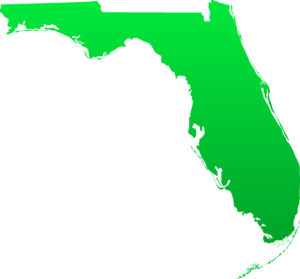(a) Purpose. The purpose of this rule is to set forth uniform criteria used by the supreme court in determining the need for additional judges, except supreme court justices, and the necessity for decreasing the number of judges, pursuant to article V, section 9, Florida Constitution. These criteria form the primary basis for the supreme court’s determination of need for additional judges. Unforeseen developments, however, may have an impact upon the judiciary resulting in needs which cannot be foreseen or predicted by statistical projections. The supreme court, therefore, may also consider any additional information found by it to be relevant to the process. In establishing criteria for the need for additional appellate court judges, substantial reliance has been placed on the findings and recommendations of the Commission on District Court of Appeal Performance and Accountability. See In re Report of the Comm’n on Dist. Court of Appeal Performance and Accountability— Rule of Judicial Admin. 2.035, 933 So. 2d 1136 (Fla. 2006).
(b) Criteria.
(1) Trial Courts.
(A) Assessment of judicial need at the trial court level is based primarily upon the application of case weights to circuit and county court caseload statistics supplied to the Office of the State Courts Administrator by the clerks of the circuit courts, pursuant to rule 2.245, Florida Rules of General Practice and Judicial Administration. Such case weights provide a quantified measure of judicial time spent on case-related activity, translating judicial caseloads into judicial workload by factoring in the relative complexity by case type in the following manner:
(i) The circuit court case weights are applied to forecasted case filings, which include circuit criminal (includes felony, drug court, and worthless check cases), circuit civil (includes matters involving claims of $30,000.01 and above), family (includes domestic relations, juvenile dependency, and juvenile delinquency cases), and probate (includes guardianship, mental health, and trust cases).
(ii) The county court case weights are applied to forecasted filings, which include county criminal (includes misdemeanor, violations of county and municipal ordinance, worthless check, driving under the influence, and other criminal traffic cases), and county civil (includes small claims, matters involving claims ranging from $8,000.01 to $30,000, landlord-tenant, and civil traffic infraction cases).
(B) Other factors may be utilized in the determination of the need for one or more additional judges. These factors include, but are not limited to, the following:
(i) The availability and use of county court judges in circuit court.
(ii) The availability and use of senior judges to serve on a particular court.
(iii) The availability and use of magistrates and hearing officers.
(iv) The extent of use of alternative dispute resolution.
(v) The number of jury trials.
(vi) Foreign language interpretations.
(vii) The geographic size and composition of a circuit, including travel times between courthouses in a particular jurisdiction and the presence of community facilities such as correctional facilities, medical facilities, and universities.
(viii) Prosecutorial practices and law enforcement activities in the court’s jurisdiction, including any substantial commitment of additional resources for state attorneys, public defenders, and local law enforcement.
(ix) The availability and use of case-related support staff and case management policies and practices.
(x) Caseload trends.
(C) The Commission on Trial Court Performance and Accountability shall review the trial court workload trends and case weights and consider adjustments no less than every five years.
(2) District Courts of Appeal.
(A) The criteria for determining the need to certify the need for increasing or decreasing the number of judges on a district court of appeal shall include the following factors:
(i) workload factors to be considered include: trends in case filings; trends in changes in case mix; trends in the backlog of cases ready for assignment and disposition; trends in the relative weight of cases disposed on the merits per judge; and changes in statutes, rules of court, and case law that directly or indirectly impact judicial workload.
(ii) efficiency factors to be considered include: a court’s ability to stay current with its caseload, as indicated by measurements such as trend in clearance rate; trends in a court’s percentage of cases disposed within the time standards set forth in the Rules of General Practice and Judicial Administration and explanation/justification for cases not resolved within the time standards; and a court’s utilization of resources, case management techniques and technologies to maximize the efficient adjudication of cases, research of legal issues, and preparation and distribution of decisions.
(iii) effectiveness factors to be considered include the extent to which each judge has adequate time to: thoroughly research legal issues, review briefs and memoranda of law, participate in court conferences on pending cases, hear and dispose of motions, and prepare correspondence, orders, judgments and opinions; expedite appropriate cases; prepare written opinions when warranted; develop, clarify, and maintain consistency in the law within that district; review all decisions rendered by the court; perform administrative duties relating to the court; and participate in the administration of the justice system through work in statewide committees.
(iv) professionalism factors to be considered include: the extent to which judges report that they have time to participate, including teaching, in education programs designed to increase the competency and efficiency of the judiciary and justice system as well as the competency of lawyers; provide guidance and instruction for the professional development of court support staff; and participate in appropriate activities of the legal profession at both the state and local levels to improve the relationship between the bench and bar, to enhance lawyer professionalism, and to improve the administration of justice.
(B) The court will presume that there is a need for an additional appellate court judgeship in any district for which a request is made and where the relative weight of cases disposed on the merits per judge would have exceeded the weighted case disposition threshold after application of the proposed additional judge(s).
(i) The relative weight of cases disposed on the merits shall be determined based upon case disposition statistics supplied to the state courts administrator by the clerks of the district courts of appeal, multiplied by the relative case weights established pursuant to subdivision (b)(2)(B)(ii), and divided by 100.
(ii) The Commission on District Court of Appeal Performance and Accountability shall review the workload trends of the district courts of appeal and consider adjustments in the relative case weights and the weighted case disposition threshold every four years. Any such recommended adjustment shall be subject to the approval of the supreme court.
(c) Additional Trial Court Workload Factors. Because summary statistics reflective of the above criteria do not fully measure judicial workload, the supreme court will receive and consider, among other things, information about the time to perform and volume of the following activities, which also comprise the judicial workload of a particular jurisdiction:
(1) review appellate court decisions;
(2) research legal issues;
(3) review briefs and memoranda of law;
(4) participate in court conferences on pending cases;
(5) hear and dispose of motions;
(6) prepare correspondence, orders, judgments, and decisional opinions;
(7) review presentence investigative reports and predispositional reports in delinquency and dependency cases;
(8) review petitions and motions for post-conviction relief;
(9) perform administrative duties relating to the court;
(10) participate in meetings with those involved in the justice system;
(11) participate in educational programs designed to increase the competency and efficiency of the judiciary;
(12) preside over problem-solving courts;
(13) use, as well as participate in the development of and training on, technology systems; and
(14) participate in election canvassing boards.
(d) Certification Process. The process by which certification of the need to increase or decrease the number of judges shall include:
(1) The state courts administrator will distribute a compilation of summary statistics and projections to each chief judge at a time designated by the chief justice.
(2) Each chief judge shall submit to the chief justice a request for any increase or decrease in the number of judges in accordance with the following:
(A) Trial Courts. Each chief judge will then consider these criteria, additional workload factors, and summary statistics, and submit to the chief justice a request for any increases or decreases under article V, section 9, of the Florida Constitution that the chief judge feels are required.
(B) District Courts. Each chief judge will then consider the criteria of this rule and the summary statistics; if a new judge is requested, the chief judge shall prepare a report showing the need for a new judge based upon the application of the criteria in this rule.
(i) Any request for a new district court judge shall be submitted to the District Court of Appeal Budget Commission for review and approval.
(ii) The chief judge of a district court of appeal shall submit the report showing the need together with the approval of the District Court of Appeal Budget Commission to the chief justice.
(3) The chief justice and the state courts administrator may then confer with the chief judge and other representatives of the court submitting the request as well as representatives of The Florida Bar and the public to gather additional information and clarification about the need in the particular jurisdiction.
(4) The chief justice will submit recommendations to the supreme court, which will thereafter certify to the legislature its findings and recommendations concerning such need.
(5) The supreme court, in conjunction with the certification process under this rule, shall also consider the necessity for increasing, decreasing, or redefining appellate districts and judicial circuits as required by article V, section 9, of the Florida Constitution and as set forth in Florida Rule of General Practice and Judicial Administration 2.241.

